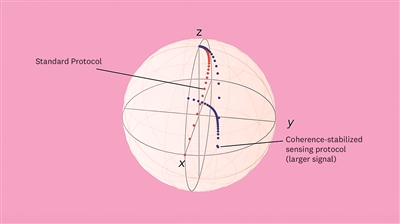
According to a report in Nature Communications on the 29th, researchers from the University of Southern California have demonstrated a new quantum sensing technology that can combat quantum decoherence with the help of a new coherent stabilization protocol. Its performance significantly exceeds that of traditional methods and is expected to promote progress in many fields, from medical imaging to basic physics research.
Quantum sensing is the use of quantum systems (such as atoms, photons or qubits) as sensors to measure physical quantities (such as brain activity, ultra-high precision clocks or gravitational anomalies) with extremely high precision, often beyond the limits of classical sensors. But for decades, the performance of quantum sensors has been limited by decoherence, an unpredictable behavior caused by environmental noise. Decoherence causes the state of a quantum system to randomly disorder, thus erasing any quantum sensing signal.
In the new study, the team used a new predetermined coherence stabilization protocol (that is, a complete set of operating procedures designed to maintain the stability of the quantum state and improve measurement accuracy) on the quantum bits in the experiment, temporarily overcoming the long-standing decoherence problem and stabilizing a key characteristic of the quantum state.

Due to decoherence, the quantum bit state decays toward the "north pole" of the sphere. Using the coherently stabilized sensing protocol in this study, the researchers temporarily offset this decay, resulting in a larger sensing signal (y component) in this study's protocol (blue) than in the standard protocol (red). Image credit: University of Southern California
The experiment significantly improved the accuracy of measuring tiny frequency shifts in quantum systems. The coherently stable sensing protocol used in the study enabled the sensing signal to be much larger than when using standard sensing protocols. This stability is critical for detecting weak signals.
The research has achieved the highest sensitivity to date in detecting the frequency of quantum bits. More importantly, this protocol requires no feedback and no additional control or measurement resources, so it can be immediately applied to various quantum computing and quantum sensing technologies.
The team demonstrated this protocol on superconducting qubits, which increased the measurement efficiency by 1.65 times compared to the standard protocol known as Ramsey interferometry. Theoretical analysis shows that in some systems, the potential improvement of this protocol can be up to 1.96 times. The demonstration experiment shows that quantum sensors can be improved without resorting to complex techniques such as real-time feedback or entanglement of multiple sensors.
(Original title: "New quantum sensing technology "overcomes" the decoherence problem")